
Mexican card, no. 301.

French postcard, no. 51. Photo: Hrand.

French postcard by A.N., Paris, no. 759. Photo: Braunberger-Richebé Michel Simon in Baleydier (Jean Mamy, 1932).

Swiss-German-British postcard by News Productions, Baulmes / Filmwelt Berlin, Bakede / News Productions, Stroud, no. 56510. Photo: Collection Cinémathèque Suisse, Lausanne. Michel Simon and Jean-Louis Barrault in Drôle de Drame/Bizarre, Bizarre (Marcel Carné, 1937), produced by Comiglion-Molinier.
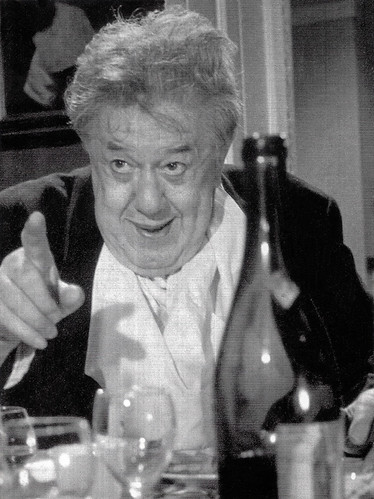
German promotion card. Michel Simon in Le diable et les 10 commandements/The Devil and the Ten Commandments (Julien Duvivier, 1962).
General Insubordination
François Michel Simon was born in Geneva, Switzerland in 1895. He used to say about himself that "as misfortune never comes singly, cinema was born the same year". He was the son of a Protestant sausage maker.
Simon drifted through his early years as a boxer, commercial photographer and acrobat. In 1912 he was a magician, clown and acrobat stooge in a dancers' show called Ribert's and Simon's, in the Montreuil-sous-Bois Casino. Conscripted into the Swiss Army in 1914, he was thrown out through a combination of tuberculosis and general insubordination.
In 1915, he saw Georges Pitoëff acting in Hedda Gabler, at the Theatre de la Comédie of Geneva. He then decided to become an actor too but had to wait until 1920 before making his first brief appearance on stage, with Pitoëff's company, speaking three lines for the registrar role in William Shakespeare's Measure for Measure.
He was spotted for the first time in a supporting role in George Bernard Shaw's Androcles and the Lion. In 1922, his company moved to Paris at the Comédie des Champs-Élysées.
He quit the following year to become a light comedy actor in plays by Tristan Bernard, Marcel Achard and Yves Mirande. Marcel Achard presented him to Charles Dullin, in whose company he acted in Je ne vous aime pas (I Don't Love You) with Valentine Tessier.

French postcard by Editions P.I., Paris, no. 43. Photo: Studio Piaz.

French postcard by Cinémagazine-Edition, no. 2026. Photo: Studio Piaz.

French collectors card. Photo: Hrand.

Belgian postcard by Kwatta. Photo: Filmsonor.

Dutch collectors card in the series 'Filmsterren: een Portret' by Edito-Service, 1994. Photo: Ciné Plus. Michel Simon in L'Atalante (Jean Vigo, 1934).
Unusual face
Louis Jouvet, who had meanwhile replaced Pitoëff, hired Michel Simon at the Comédie des Champs-Élysées. Simon then gave a brilliant performance in Jean de la Lune, a play by Marcel Achard. His inimitable talent transformed his Cloclo supporting role into the big attraction of the play.
His theatrical career then blossomed with a large repertoire: Shakespeare, George Bernard Shaw, Luigi Pirandello, Oscar Wilde, Henri Bernstein, but it was the film that made him most popular.
One of his first film appearances was as Pomino opposite Ivan Mozzhukhin in Feu Mathias Pascal/The Late Mathias Pascal (1925), based on the novel by Luigi Pirandello and directed by Marcel L'Herbier.
Very soon after, he appeared in La vocation d'André Carel/The Vocation of André Carel (Jean Choux, 1925) with Blanche Montel. The film used small-scale production methods, just as the Nouvelle Vague would do from 1958 on.
Essentially a theatre performer throughout the 1920s, Simon occasionally appeared in small film roles, notably in Casanova (Alexandre Volkoff, 1927) and as Jean LeMaitre in La Passion de Jeanne d'Arc/The Passion of Joan of Arc (Carl Theodor Dreyer, 1928).
In these silent films, he brought his amazing appearance and his unusual face - a talent with exceptional mobility, but truly without mannerism. He easily played with his body using an unlimited virtuosity, especially his ugliness, evolving from smartness to sympathy, goodness to naivety, ludicrousness to frightening, stupidity to comical, mischievousness to cruelty.

French postcard by S.E.R.P., Paris, no. 155. Photo: Studio Harcourt.

Swiss-German-British postcard by News Productions, Baulmes / Filmwelt Berlin, Bakede / News Productions, Stroud, no. 56507. Photo: Collection Cinémathèque Suisse, Lausanne. Michel Simon in Le Mort en Fuite/The Fleeing Dead (André Berthomieu, 1936), produced by Société des Films Roger Richebé.
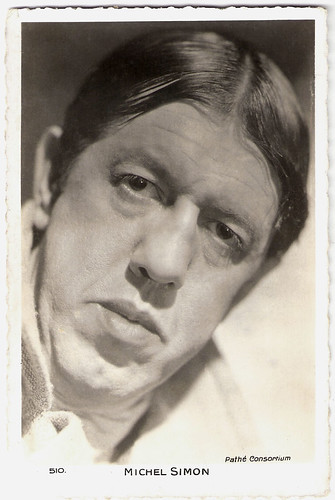
French postcard by Ed. Chantal, Paris, no. 510. Photo: Pathé Consortium.
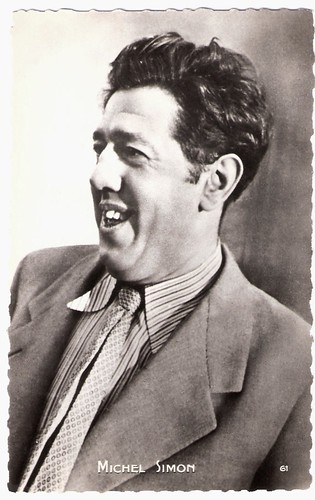
French postcard by Editions P.I., Paris, no. 61. Offered by Les Carbones Korès 'Carboplane'.
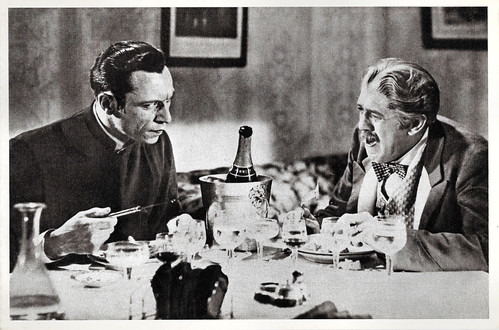
French postcard by Editions La Malibran, Paris, no. CF 1.Photo: Schüfftan / Page / Alekan. Louis Jouvet and Michel Simon in Drôle de Drame/Bizarre, Bizarre (Marcel Carné, 1937).

Photo. Michel Simon as Count Édouard de Bourgogne, nicknamed "l'Escargot" (the snail), in the film melodrama Le Ruisseau/The Stream (Maurice Lehmann, Claude Autant-Lara (uncredited), 1938), scripted by Jean Aurenche after the play by Pierre Wolff.
Outstanding character actor
With the coming of sound film, Michel Simon became firmly established as one of France's outstanding character actors. Full film stardom came his way when, in 1931, Simon starred in the film version of his great stage success Jean De La Lune/Moon-Struck Jean (Jean Choux, 1931) with Madeleine Renaud. People remarked that his elocution and voice tone were as original as his appearance and play.
As Hal Erickson at AllMovie writes: “His screen performances of the 1930s remain fresh and alive even after six decades, largely due to Simon's sudden spurts of improvisation”. Especially his roles in the films directed by Jean Renoir, such as the bitter and highly controversial psychological drama La Chienne/The Bitch (1931), the comedy On Purge Bebé/We Purge Baby (1932) and Boudu Sauvé Des Eaux/Boudu Saved From Drowning (1932). The latter was remade in Hollywood as Down and Out in Beverly Hills (1986, Paul Mazursky) with Nick Nolte in the Michel Simon role, Richard Dreyfuss and Bette Midler.
Hal Erickson continues: “Renoir has credited the actor with introducing the ‘improv’ technique to French filmmaking. Capable of harnessing his rocky-road face, bulky body and shambling manner for the purposes of menace as well as mirth, Simon proved a fearsome creature in Jean Vigo's last film, L'Atlante (1934) opposite lovely Dita Parlo.”
It is probably for his role as Père Jules in L’Atalante that he will be best known: the slightly roguish, ageing barge-man with a heart of gold. He went on to work with another great director, Marcel Carné, on the comedy-farce Drôle de Drame/Bizarre, Bizarre (Marcel Carné, 1937) with Louis Jouvet, and the romantic drama Le Quai des Brumes/Port of Shadows (Marcel Carné, 1938) with Jean Gabin.

French postcard by Editions Le Malibran, Paris / Saint-Dié, no. CF 11. Michel Simon and Arletty in Fric-Frac/Break-In (Maurice Lehmann, Claude Autant-Lara (uncredited), 1939).

French postcard in the Collection Cinéma by Editions Le Malibran, Paris / Nancy, no. CF 51. Michel Simon and Fernandel in Fric-Frac/Break-In (Maurice Lehmann, Claude Autant-Lara (uncredited), 1939).
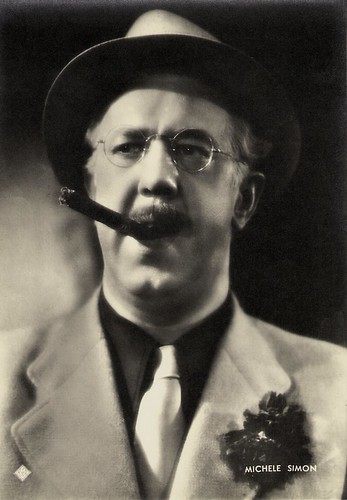
Italian postcard by ASER (A. Scarmiglia Ed. Roma). Photo: Pesce. Publicity still for La comédie du Bonheur/Comedy of Happiness (Marcel L'Herbier, 1940).
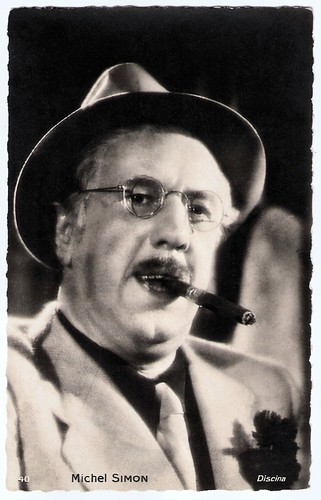
French postcard by Ed. Chantal, Rueil, no. 40. Photo: Discina. Publicity still for La comédie du Bonheur/Comedy of Happiness (Marcel L'Herbier, 1940).
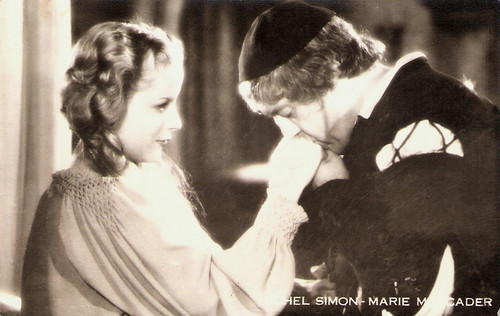
Italian postcard. Photo: publicity still of Maria Mercader and Michel Simon in Il re si diverte/The King's Jester (Mario Bonnard, 1941).

French postcard by Rotalfoto, Milano / Ediz. Garami, no. 131.
Faust and Mephistopheles
Michel Simon later also worked with such other A-list directors as Julien Duvivier at La Fin du Jour/The End of the Day (1939) and Panique/Panic (1946), and René Clair, appearing in the latter's La Beauté du Diable/Beauty and the Devil (1950) opposite Gérard Philipe as both Faust and Mephistopheles.
In 1957, Simon's film career nearly came to an abrupt end when he suffered facial and body paralysis as a by-product of an impure makeup dye. Despite his reduced physical mobility, he painstakingly made a comeback.
Hal Erickson: “Having been forced into minor parts for several years by a debilitating illness, veteran film actor Michel Simon made a triumphant return to leading roles in the charming, poignant Le Vieil Homme et L'Enfant/The Two of Us (Claude Berri, 1967).” That year, he won the Silver Bear for Best Actor at the 17th Berlin International Film Festival for his penetrating portrayal of an anti-Semitic French peasant in this beautiful film.
After that he made a few more films, including Walerian Borowczyk's Blanche (1971), a tragic romantic tale set in 13th century France, and his final film the crime drama L'Ibis Rouge/The Red Ibis (Jean-Pierre Mocky, 1975).
All reports indicate that Michel Simon conducted his private life in the manner of one of his gross, eccentric film characters: he lived alone on a huge country estate, sharing space with a pet parrot and four apes.
Michel Simon died in 1975 in Bry-sur-Marne, France, from a pulmonary embolism. His latest companion was the German artist Margarethe Krieger. The actor François Simon (1917) is his son.
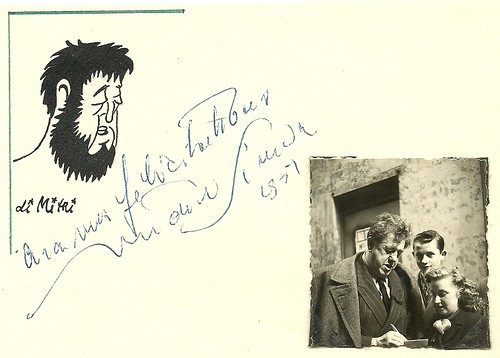
Photo with dedication. Collection: Didier Hanson.

French postcard by Editions SEPPMG, Paris, in the 'Les Grands Artistes' series, Série 1 G, no. 104. Caption: Michel Simon in Noisy-le-Sec in 1961.
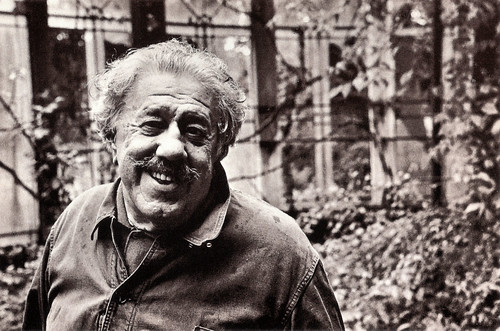
French postcard by OPSIS, Paris, no. C 7 - Personalités du XXe siècle. Photo: J. Mounicq.

Dutch collectors card in the series 'Filmsterren: een Portret' by Edito-Service, 1994. Photo: Collection La Cinémathèque française. Michel Simon and Alain Cohen in Le vieil homme et l'enfant/The Two of Us (Claude Berri, 1967).

French postcard in the Les Grandes Gueules series by Dervish International Publications, Paris, no. 104. Drawing from the albums 'Les Grandes Gueules' by Ricord - Mulatier - Morchoisne.
Sources: Hal Erickson (AllMovie), Michael Brooke (IMDb), Les Amis de Michel Simon (French), Wikipedia and IMDb.
I'm really glad that postcards where invented a long time ago. Long enough to remember great people and great artists like them. And in this way, you can appreciate them even if they were before your time.
ReplyDeleteThese are so interesting.
ReplyDeleteGerard Philippe was quite a handsome man!
Knowing nothing at all about him (Gerard Philippe), I did a search and discovered that he died too young.
ReplyDelete